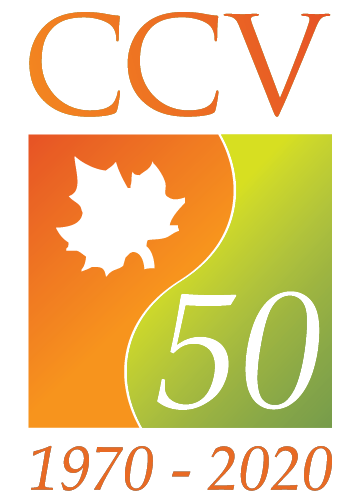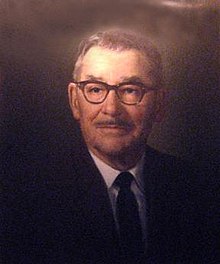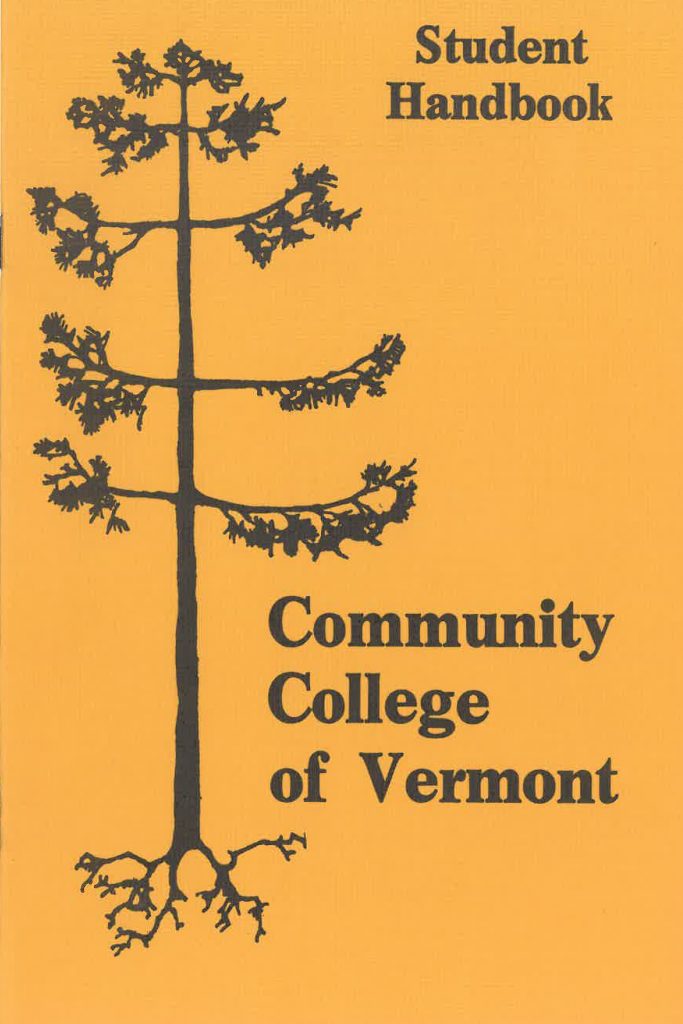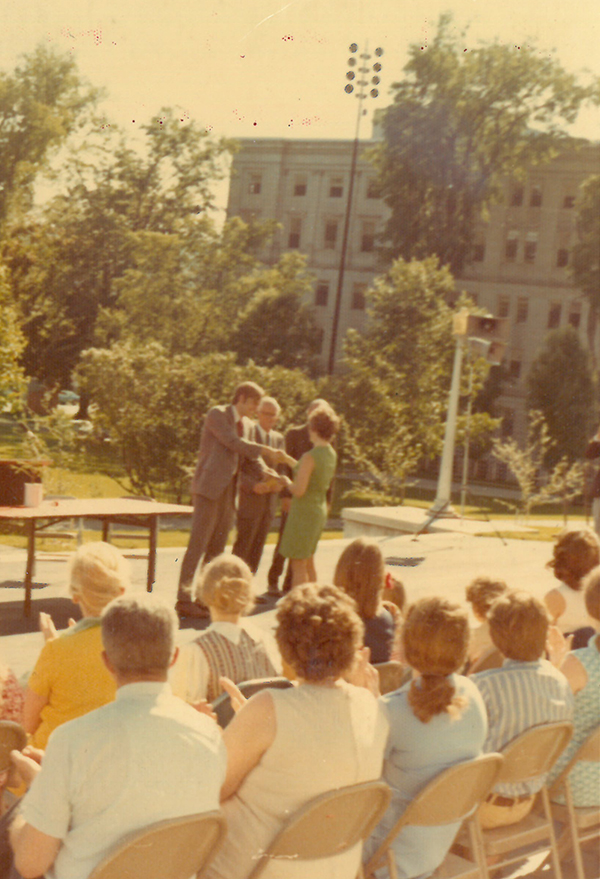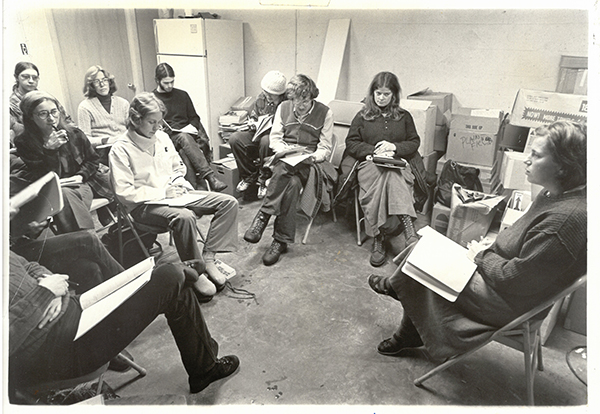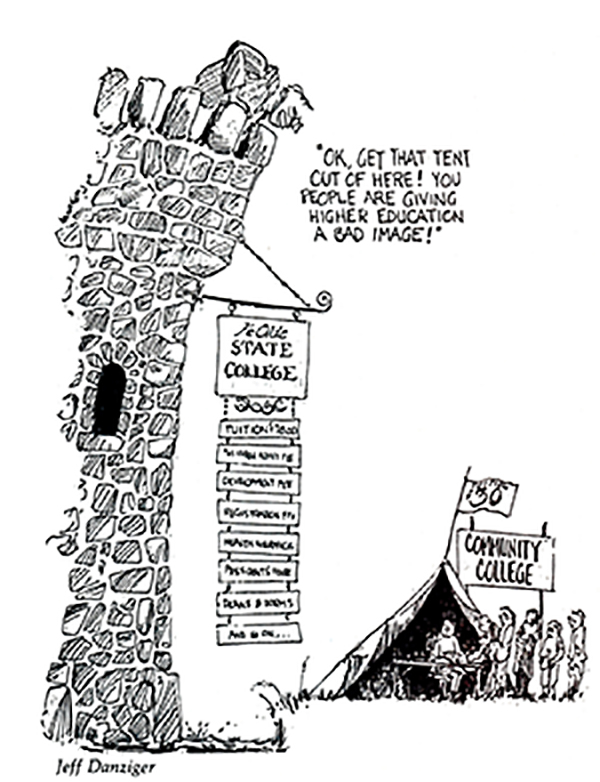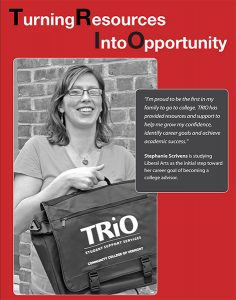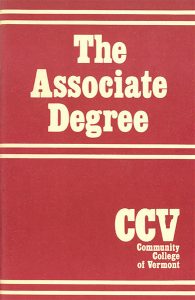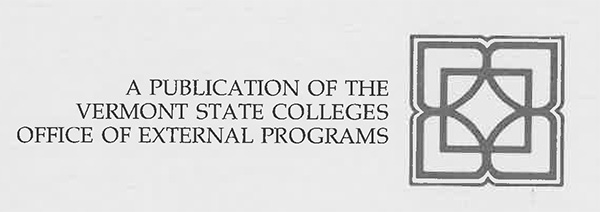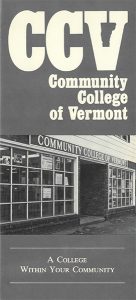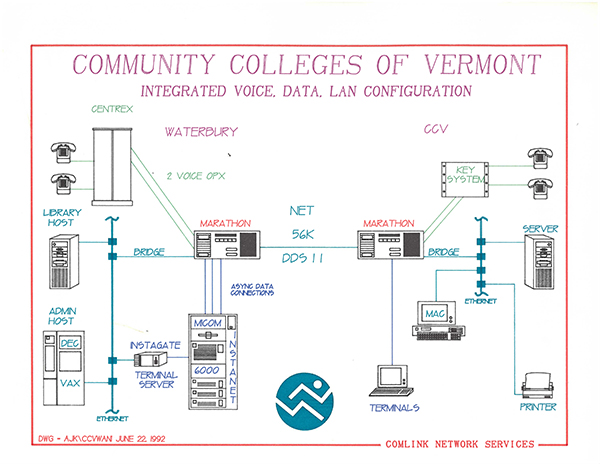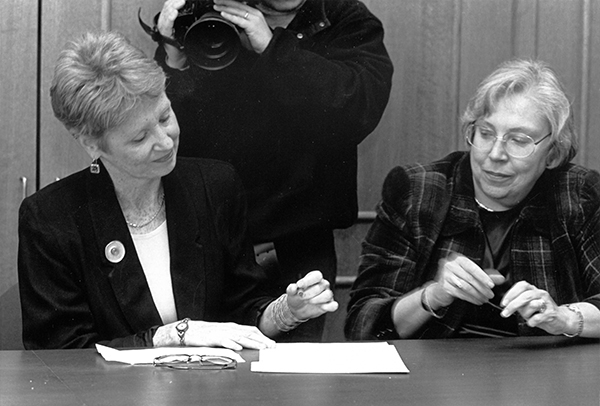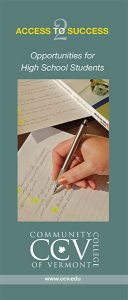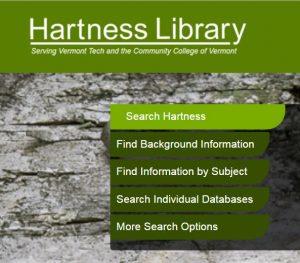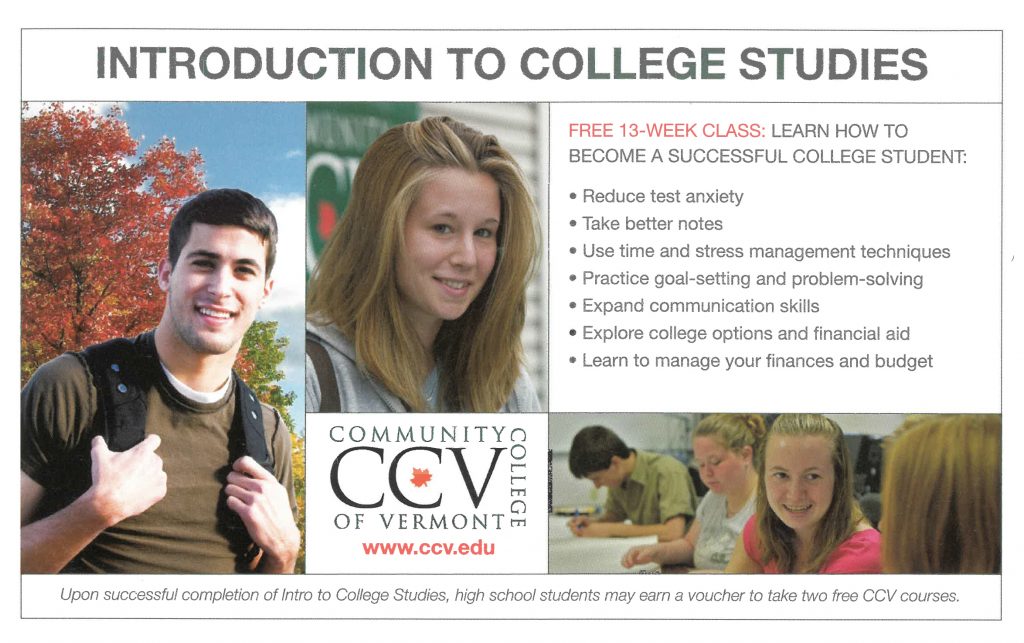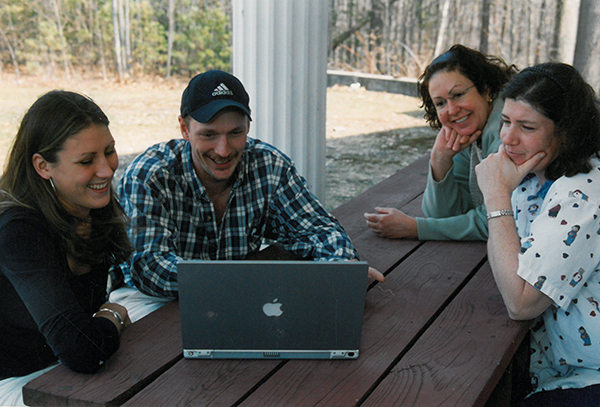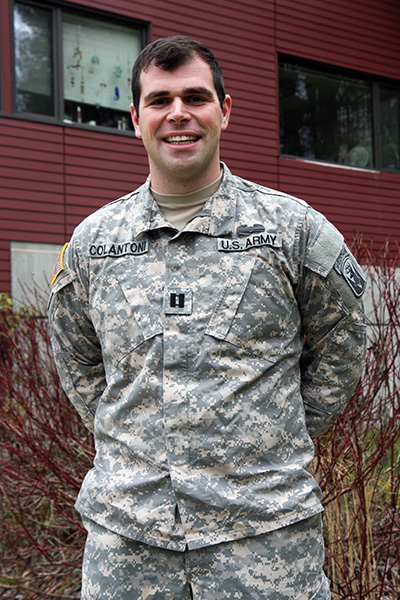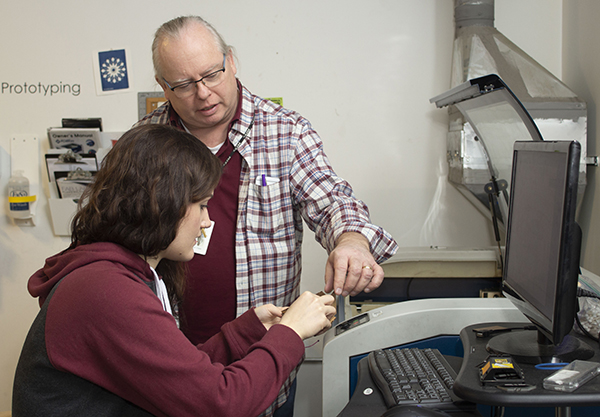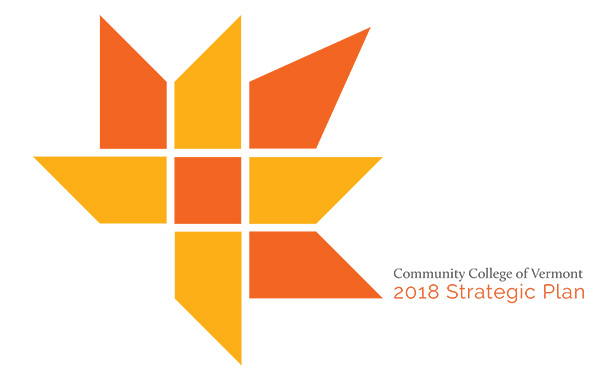Creation: 1970-1979
In late summer 1970, Governor Deane Davis charges a special commission with finding a way to deliver postsecondary education to Vermonters in their local communities. That fall, a handful of people in a single, cramped office in Montpelier offer a menu of ten courses. In these earliest years, students are not charged tuition and instructors do not receive pay. Idealism, energy, and zeal are the order of the day.
An experiment from the beginning, CCV is Vermont’s innovative response to a gap in access to education. CCV makes it possible for people to continue their education—people who might have been discouraged in the past by high tuition costs, distance from campuses, family or job responsibilities, and limiting admissions policies. CCV utilizes resources already available in Vermont communities, holding classes in schools, offices, banks, churches, and even the local hardware store. CCV instructors are also members of the local community, often with full-time jobs practicing the skills they teach.
CCV places its greatest emphasis on the student. Through its field offices located around the state, the College brings courses into Vermont communities, designing classes to meet student needs. Through low tuition, flexible class hours, open admissions, and the use of existing resources, CCV brings new opportunities to thousands of Vermonters previously excluded from postsecondary education. When the College is threatened with closure in 1979, a groundswell of grassroots support led by students, along with faculty and staff, saves CCV. Bruised but not beaten, CCV looks ahead while holding on to its founding principles and unique educational philosophy.
Fall 1979 Snapshot: 1,296 students, 283 instructors, 37 staff, $38/credit tuition, 413 degrees granted
President: Peter Smith 1970 – 1978
Expansion: 1980-1989
A newly reorganized CCV sets its sights on improved academic credibility, financial stability, and greater community visibility. CCV is awarded its first major grants from the U. S. Department of Education, and in 1982, is re-accredited for 10 years by the New England Association of Schools and Colleges.
CCV experiences a growth spurt under the leadership of Ken Kalb, its third president. Over the course of the decade, enrollment more than doubles and only UVM enrolls more students. CCV is the second largest college in the state and the student population begins to shift to a greater number of degree-seeking students.
CCV continues to expand into all corners of the state by adding six locations, bringing CCV within 25 miles of 95% of Vermonters.
At the beginning of the decade, the College operates as a loose confederation of local offices, each creating its own course list and marketing materials. But by the end of the 1980s, CCV has truly become one college with standard course offerings and a centralized Academic Review Board.
With its academic and organizational foundation in place, and remaining true to its student-centered approach to teaching and learning, CCV is poised to take on the Information Age in the years ahead.
Fall 1989 Snapshot: 3,881 students, 459 instructors, 98 staff, $60/credit tuition, 1,376 degrees granted
Featured President: Kenneth G. Kalb, 1983 – 1991

Innovation: 1990 – 1999
By the early 1990s, CCV serves more students each year than the other Vermont State Colleges institutions combined. With no campus, it operates from 12 leased facilities. In a quest for greater administrative efficiency and creative ways to reach geographically dispersed students, CCV embraces new technologies with vigor. Within the span of ten months, CCV’s Virtual Campus project uses emerging network and computer systems to connect all 12 locations, the library, and central administrative offices, allowing for increased and instantaneous collaboration across the College.
CCV embraces a culture of change. Within the Vermont State Colleges system, CCV gains recognition for its agility, responsiveness, and vision, while remaining focused on excellence in teaching and learning. Venturing into largely unmapped territory, CCV experiments with a few online courses and soon develops the capacity to deliver a wide variety of classes and programs to rural students left stranded by traditional delivery models.With this development, CCV’s 13thacademic center, the Center for Online Learning, is born.
As increased numbers of traditional-aged students aspire to continue their education beyond CCV, the College pursues special transfer agreements and gains a reputation as a pipeline into Vermont’s four-year institutions. By the end of the decade, CCV emerges as a mature, high-functioning organization with an integral place in Vermont’s higher education landscape.
Fall 1999 Snapshot: 4,812 students, 517 instructors, 127 staff, $108/credit tuition, 4,040 degrees granted
Featured President: Barbara E. Murphy, 1994 – 2001

Recognition: 2000 – 2009
CCV is broadly recognized as an essential player in Vermont higher education, with a unique niche in the arena of online learning. Students can complete degree and certificate programs entirely online, but also enjoy access to in-person local supports from their academic advisors and learning centers.
In 2000, CCV takes the bold step of revamping its entire library system. Until this point, the College has had no central library facility and students have relied heavily on local libraries and web-based resources. CCV merges its “anytime, anywhere” resources with Vermont Tech’s campus-based library services to create the shared Hartness Library.
For the first time in its history, CCV invests in and owns its own facilities. This developmentstabilizes, and in some instances reduces, overall facilities costs, while more firmly rooting the College in the communities it serves. These new academic centers are key to serving an increasingly full-time, traditional-aged student population.
In forty years, CCV has grown in ways no one could have foreseen. By 2010, online courses account for 20% of overall enrollment, and an average of 1,200 Vermont high school students co-enroll at CCV each year.
Fall 2009 Snapshot: 7,005 students, 640 instructors, 180 staff, $199/credit tuition, 7,940 degrees granted
Featured President: Timothy J. Donovan, 2001 – 2009

Connection: 2010 – 2019
Under the leadership of Joyce Judy, the College’s seventh president, CCV focuses on cultivating deep and lasting relationships with high schools, businesses, and community partners across Vermont.
From the support services needed by the 1,700 Vermont National Guard troops returning to the state in 2010 to credential and degree programs created in direct response to student and employer needs, CCV is proactive in serving Vermont communities.
With the goal of increasing the number of students who continue their education, CCV plays a key leadership role in promoting opportunities for high school students to take college courses. An enhanced continuum of offerings engages students as early as middle school and allows high school students to earn 36 to 44 college credits for free through the Dual Enrollment and Early College programs.
Philanthropy plays an important role in the College’s ability to enhance student support services and to offer scholarships that provide just-in-time support to help students stay on track in their studies.
As CCV looks to celebrating its 50thyear in 2020, its mission is more relevant than ever. CCV is committed to ensuring that the opportunity to pursue higher education exists for generations of Vermonters to come.
Fall 2018 Snapshot: 5844 students, 760 instructors, 160 staff, $268/credit tuition, 12,448 degrees granted
Featured President: Joyce M. Judy, 2009 – present






